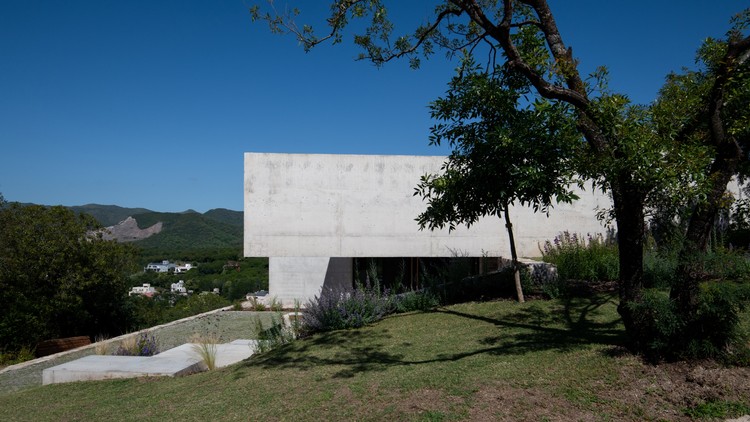Arizona Western College Community Building And Science + Agriculture Center Gould Evans
2014-12-18 01:00
© Winquist Photography
温奎斯特摄影


架构师提供的文本描述。亚利桑那州尤马市的亚利桑那州西部学院社区建设和科学农业中心反映了该学院对学生和当地社区的大胆认同和承诺。
Text description provided by the architects. The Arizona Western College Community Building and Science + Agriculture Center in Yuma, Arizona reflect the college’s bold identity and its commitment to its students and to the local community.
© Winquist Photography
温奎斯特摄影


亚利桑那西部学院正在寻求在校园身份、社区参与和学术方法方面改变方向。与新的学院社区中心(CCC)和科学和农业实验室(Sci-Ag),学院希望强调重叠和交叉的科学项目,并最大限度地参与尤马社区。这些建筑鼓励学生、教师和社区居民的不同群体之间的协作和互动。
Arizona Western College was looking for a change of direction in terms of campus identity, community engagement, and academic approach. With the new College Community Center (CCC) and Science and Agriculture Lab (Sci-Ag) the college wanted to emphasize overlap and intersection of science programs and maximize engagement with the Yuma community. The buildings encourage collaboration and interaction of diverse groups of students, faculty, and community residents.
© Winquist Photography
温奎斯特摄影


该项目通过标记多个拐点(或偏离规范)提供了通往校园的新途径:科学和社区的融合、促进学生成功的倡议和闭环可持续目标。科学和农业中心将跨学科的科学教学与可持续的校园和社区项目结合在一起。
This project provides a new gateway to the campus by marking multiple points of inflection (or deviations from the norm): integration of science and community, a boost to student success initiatives, and closed loop sustainable goals. The Science and Agriculture Center merges interdisciplinary science instruction with sustainable campus and community programs.
© Winquist Photography
温奎斯特摄影


建筑中使用的可持续发展策略成为学校科学课程的教学工具。食堂废物是作为指示的一部分处理的;堆肥在农业和土壤实验室进行研究,并用于教育领域,并出售给当地农民。
The sustainable strategies used in the building became a teaching tool for the school’s science program. The cafeteria waste is processed as part of the instruction; compost is studied in the agriculture and soils labs, and used on the educational fields and sold to local farmers.


在屋顶上可以看到该项目的主要胜利之一,在那里,物理和化学课都研究了一系列光伏电池板。100 kW光伏系统也被用作整个校园的测试用例。根据其结果,校园开发了一个5兆瓦的系统,将提供125%的校园所需电力。这有效地消除了校园的“离网”,保证在未来30年内节省6200万美元的能源成本。该工作系统将继续提供教学机会,配备能让学生跟踪生产和消费情况的电能表。
One of the major victories of the project can be seen on the roof, where an array of photovoltaic panels is studied in both physics and chemistry classes. The 100kW photovoltaic system was also used as a test case for the entire campus. Based on its results, the campus developed a 5 megawatt system which will provide 125% of the campus’s required power. This effectively takes the campus ‘off grid’, leading to a guaranteed $62 million savings on energy costs over the next 30 years. The working system will continue to provide instructional opportunities, with energy meters that allow students to track production versus consumption.
© Winquist Photography
温奎斯特摄影


在利用当地丰富的光线,集中精力维持土地,研究土壤,堆肥和回馈当地社区;建筑和它的地点庆祝玉马的农业。社区建筑通过重叠的路径连接学生和教师,并在空间(内部和外部)之间建立视觉联系。新的大门两侧都是学生服务,这是一家一站式的商店,并邀请当地社区作为会议和文化活动的场所。独特的外墙面板反映了沙漠的丰富纹理,强烈的蓝天,以及经过的学生。
In harnessing the abundant local light, in focusing on sustaining the land, in studying the soil, composting and giving something back to the local community; the building and its site celebrate the agriculture of Yuma. The Community Building connects students and faculty by overlapping paths and creating visual connections between spaces (both inside and outside). The new front door is flanked with student services, a one-stop-shop, and invites in the local community as a setting for conference and cultural events. The distinctive exterior wall panels reflect the rich textures of the desert, of the intense blue sky, and the students who pass by.
© Winquist Photography
温奎斯特摄影










































Architects Gould Evans
Location 2020 South 8th Avenue, Yuma, AZ 85364, United States
Category Other Facilities
Area 175000.0 ft2
Project Year 2008
Photographs Winquist Photography
























